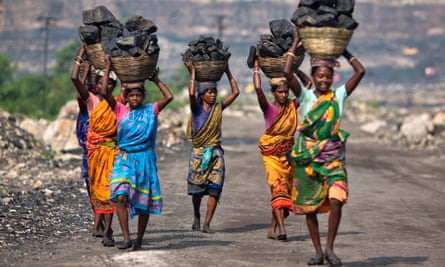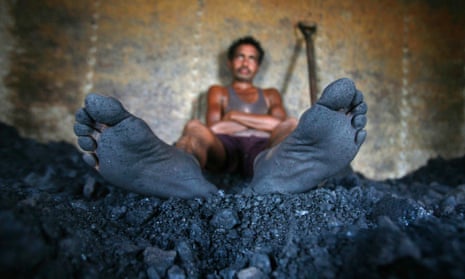Here are little known facts about coal: its use is responsible for 400,000 premature deaths per year globally, and many more illnesses. In India, coal contributes to between 80,000 to 115,000 premature deaths and 20m new asthma cases annually. It is also responsible for around 40% of the greenhouse gas emissions that are dramatically changing the world’s climate and impoverishing millions of people.
This, however, did not stop Tony Abbott from glossing over these costs when he declared recently that “coal is good for humanity”, nor did it stop environment minister Greg Hunt from saying that coal will lift millions in the developing world out of energy poverty.
But coal is not the solution to energy poverty. Local renewable energy is. India’s people are best served by renewable energy sources like wind, solar and small-scale hydropower. That’s why Indian giant Adani’s proposed Carmichael mine in Queensland’s Galilee Basin, one of the world’s largest, is such a backward idea – and why I have joined the fight to stop it.
Carmichael’s coal will be exported to India, but India’s clean energy industry is already booming. India added the equivalent of about 40% of Australia’s installed electricity capacity in renewable power generation from 2010 to 2014. These homegrown sources put more people to work lighting Indian homes and powering our economy kilowatt for kilowatt than coal-generated energy.
Nowhere is the choice more clear than in rural areas that aren’t connected to a power grid. Coal has failed to bring electricity to 300m people in India. Coal-rich states such as Odisha, Bihar and Jharkhand still have some of the lowest electrification rates in the country. According to the International Energy Agency, 147m Indians will remain without electricity into 2030 under a business as usual scenario emphasising coal.

Added to this, when a village is more than 5km from the grid, the cost of supplying electricity from decentralised renewable sources is far below the costs of supplying from conventional sources when grid transmission infrastructure is taken into account. Already, solar lanterns and solar photovoltaic panels are bringing electricity to millions of Indians who have remained in the dark for generations.
Clean energy technology costs will continue to fall with economies of scale as investments grow worldwide. A huge drop in cost of LED lights over the last decade – a technological advance recognised by this year’s Nobel Prize in physics – is transforming life for millions of people across the globe.
This difference is even starker when you take into account the costs of imported coal from Australia and Indonesia. Increases in imported Indonesian coal prices have made the massive Tata Mundra and Adani Mundra power projects in the Indian state of Gujarat uneconomical, leading to plant shutdowns.
This price differential would be even greater for Australian coal. Recent analysis from the Institute of Energy Economics and Financial Analysis has shown that the cost of imported Galilee coal-fired power generation in India is double the current average wholesale cost of electricity. More than 300m Indians simply cannot afford Australian coal.
Australians ought to take their own hard look at the Carmichael mine. If built, it would lock Australia in to decades of pollution and worsen climate change, with the developing world disproportionately affected. The coal will be exported through Adani’s port on the World Heritage-listed Great Barrier Reef, putting its health and integrity at risk.
The coal from Carmichael, when burnt in Adani’s power stations in India, will damage the health of the Indian rural poor and the land and water on which they depend for their livelihoods. And they still won’t be able to afford the electricity generated.
Abbott said “coal has a big future as well as a big past.” He and the coal companies want us all to believe that coal is inevitable. Coal helped build the economies of developed countries and so it must be the right choice for the rest of us. Yet by that logic, the opium trade and slavery should also be reintroduced, since they also contributed to the enrichment of many countries.
All the pieces are in place now for developing countries to choose a clean energy path that is cheaper, faster and healthier than coal. It would be nice if the Australian government focused on this, rather than exporting dirty, outdated coal.






